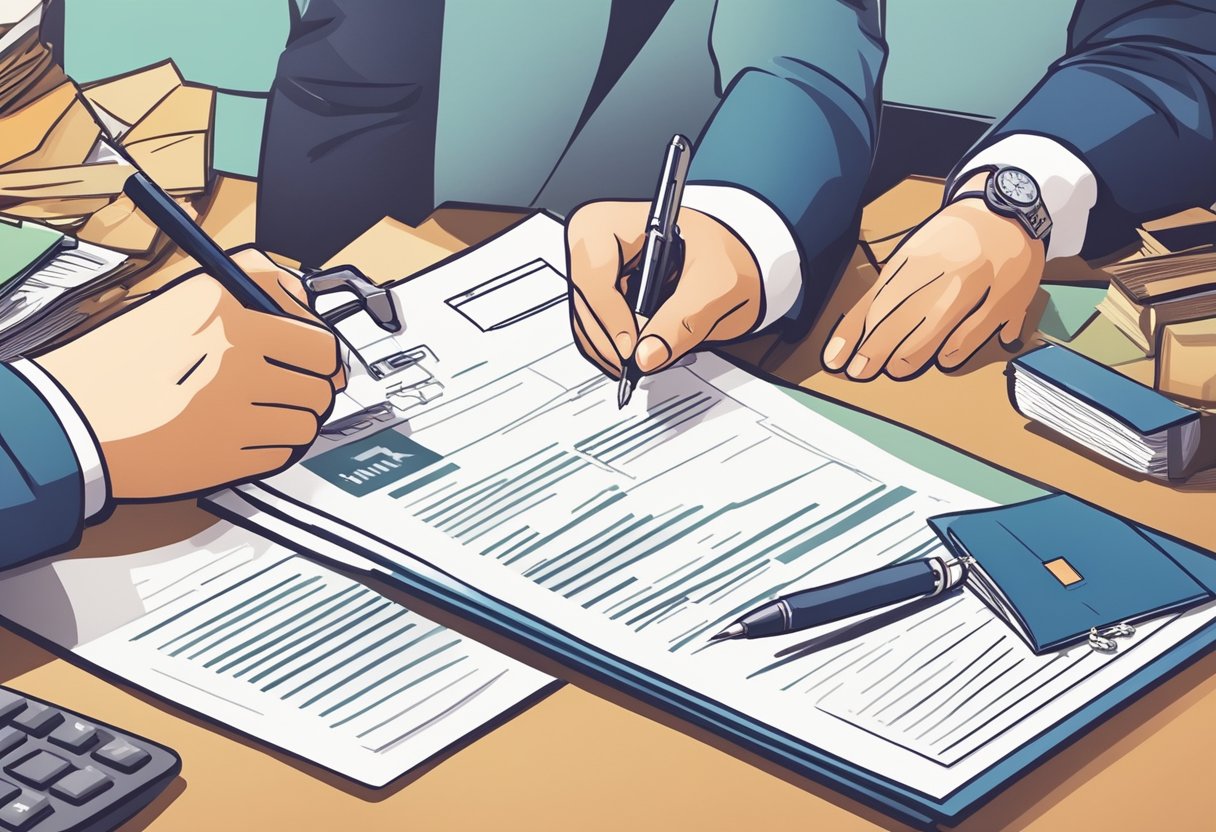Mortgage loans are the most common way for people to purchase a home. They are a type of loan that is secured by the property being purchased. The borrower makes monthly payments to the lender, which includes both principal and interest. The process of obtaining a mortgage loan can be complex, but understanding the basics can help make the process smoother.

There are several types of mortgage loans available, including conventional, FHA, and VA loans. Each type of loan has its own requirements and benefits. For example, FHA loans are often easier to qualify for than conventional loans, but they require mortgage insurance. VA loans are available to veterans and active-duty military personnel and offer several benefits, including no down payment and no mortgage insurance. Understanding the different types of mortgage loans can help borrowers choose the one that best fits their needs.
Key Takeaways
- Mortgage loans are a common way for people to purchase a home.
- There are several types of mortgage loans available, each with its own requirements and benefits.
- Understanding the different types of mortgage loans can help borrowers choose the one that best fits their needs.
Understanding Mortgage Loans

Definition and Purpose
A mortgage loan is a type of loan used to purchase real estate, such as a home or a commercial property. The borrower, usually a homebuyer, borrows money from a lender, typically a bank or mortgage company, to purchase the property. The borrower then makes monthly payments to the lender over a set period of time, usually 15 or 30 years, until the loan is paid off.
The purpose of a mortgage loan is to help individuals and families purchase a home or other real estate property that they might not be able to afford with cash alone. With a mortgage loan, borrowers can make a down payment on the property and then pay off the remainder of the purchase price over time, with interest.
Key Components of a Mortgage
There are several key components of a mortgage loan that borrowers should be aware of before applying for a loan. These components include:
- Loan amount: The amount of money that the borrower is borrowing from the lender to purchase the property.
- Interest rate: The rate at which the borrower will be charged interest on the loan amount.
- Term: The length of time over which the borrower will make monthly payments to the lender.
- Down payment: The amount of money that the borrower will pay upfront toward the purchase price of the property.
- Mortgage insurance: Insurance that protects the lender in case the borrower defaults on the loan.
- Closing costs: Fees associated with the purchase of the property, such as appraisal fees, title insurance, and attorney fees.
It is important for borrowers to understand these components in order to make informed decisions about their mortgage loan. For example, a larger down payment can result in a lower interest rate and lower monthly payments, while mortgage insurance can add to the overall cost of the loan.
Navigating the Mortgage Loan Process

Navigating the mortgage loan process can be a daunting task, but with the right guidance and knowledge, it can be a smooth and successful experience. Here are the four main steps to follow when navigating the mortgage loan process.
Pre-Approval and Application
The first step in the mortgage loan process is to get pre-approved for a mortgage loan. This involves submitting an application to a lender, who will then review your financial information, credit score, and employment history to determine how much they are willing to lend you. Once you have been pre-approved, you can begin house hunting with confidence, knowing how much you can afford.
Property Appraisal and Inspection
Once you have found a home you want to buy, the lender will require an appraisal and inspection of the property. The appraisal will determine the value of the property and ensure that it is worth the amount you are borrowing. The inspection will identify any potential problems with the property, such as structural issues or needed repairs.
Loan Processing and Underwriting
After the appraisal and inspection have been completed, the lender will begin processing your loan application. This involves verifying your employment, income, and other financial information. The lender will also underwrite your loan, which means they will assess the risk of lending you money based on your credit score, debt-to-income ratio, and other factors.
Closing the Mortgage Loan
The final step in the mortgage loan process is closing the loan. This involves signing a lot of paperwork and paying closing costs, which typically include fees for the appraisal, inspection, and title search. Once the paperwork is signed and the closing costs are paid, you will receive the keys to your new home.
By following these steps and working with a knowledgeable lender, you can successfully navigate the mortgage loan process and achieve your dream of homeownership.
Frequently Asked Questions

What are the initial steps to begin the mortgage loan application process?
The first step in the mortgage loan application process is to gather all the necessary documents and information required by the lender. This includes your income, employment history, credit score, and debt-to-income ratio. After you have collected all the necessary information, you can begin shopping for a lender and getting pre-approved for a mortgage.
Can you outline the typical timeline for a mortgage loan from application to closing?
The timeline for a mortgage loan can vary depending on the lender, the type of loan, and the borrower’s financial situation. On average, the mortgage loan process can take anywhere from 30 to 45 days from the time of application to closing. However, this timeline can be longer or shorter depending on a variety of factors.
What are the main types of mortgage loans available to borrowers?
There are several types of mortgage loans available to borrowers, including conventional loans, FHA loans, VA loans, and USDA loans. Conventional loans are not backed by the government and typically require higher credit scores and down payments. FHA loans are backed by the Federal Housing Administration and are popular among first-time homebuyers. VA loans are available to veterans and active-duty military members and offer competitive interest rates and no down payment. USDA loans are available to borrowers in rural areas and offer low or no down payment options.
What are the key components included in a mortgage payment?
A mortgage payment typically includes four key components: principal, interest, taxes, and insurance (PITI). The principal is the amount of money borrowed to purchase the home, while the interest is the cost of borrowing that money. Taxes and insurance are additional costs that are typically paid as part of the mortgage payment to cover property taxes and homeowner’s insurance.
How does the mortgage loan process differ for first-time homebuyers?
The mortgage loan process for first-time homebuyers is similar to that of other borrowers. However, first-time homebuyers may be eligible for special programs and incentives, such as down payment assistance and lower interest rates. Additionally, first-time homebuyers may have more questions and concerns about the mortgage loan process, so it’s important to work with a lender who can provide guidance and support throughout the process.
What are the critical checkpoints in a mortgage loan processing checklist?
A mortgage loan processing checklist typically includes several critical checkpoints, including verifying the borrower’s income and employment history, reviewing the borrower’s credit score and debt-to-income ratio, ordering an appraisal of the property, and obtaining a title report. Other checkpoints may include verifying the borrower’s assets, reviewing the loan application for accuracy, and ensuring that all necessary documentation has been provided.